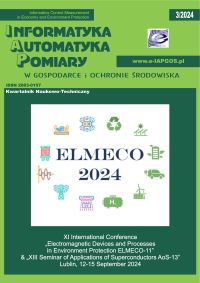ANALIZA STOSOWALNOŚCI USŁUG SIECIOWYCH TYPU REST I SOAP
Tomasz Zientarski
t.zientarski@pollub.plLublin University of Technology, Institute of Computer Science (Polska)
Marek Miłosz
Lublin University of Technology, Institute of Computer Science (Polska)
Marek Kamiński
Lublin University of Technology, Institute of Computer Science (Polska)
Maciej Kołodziej
Sii Poland sp. z o.o. – Lublin (Polska)
Abstrakt
Usługi sieciowe są powszechnie stosowane do wymiany danych i informacji w Internecie. Usługi sieciowe nie zależą od użytej platformy sprzętowej oraz od oprogramowania. W niniejszym artykule zostały omówione dwie najpopularniejsze technologie tworzenia usług sieciowych: REST (ang. Representational State Transfer) i SOAP (ang. Simple Object Access Protocol). W trakcie realizacji badań przeprowadzono analizę stosowalności tych usług w różnych obszarach zastosowań. Stwierdzono że w przeszłości obie technologie cieszyły się porównywalną popularnością, lecz w momencie gwałtownego rozwoju Internetu technologia REST stała się technologią dominującą w zakresie dostępu do usług sieciowych.
Słowa kluczowe:
usługi sieciowe, soap, rest, stosowalnośćBibliografia
Davis D., Parashar M.: Latency performance of SOAP implementations. IEEE Cluster Computing and the Grid, 2nd IEEE/ACM International Symposium, 2002, 407–407.
Google Scholar
Fielding R.T., Taylor R.N.: Principled design of the modern web architecture. ACM Transactions on Internet Technology 2(2), 2002, 115–150.
Google Scholar
Gomez M., de Miguel T.P.: Advanced IMS multipoint conference management using web services. Communications Magazine IEEE 45(7), 2007, 51–57.
Google Scholar
Kankanamge C.: Web services testing with SoapUI. Packt Publishing, Birmingham 2012.
Google Scholar
Kopniak P.: SOA system integration with web services. Varia Informatica 2011, Polish Information Processing Society, 2011, 147–163.
Google Scholar
Mumbaikar S., Padiya P., et al.: Web services based on SOAP and REST principles. International Journal of Scientific and Research Publications 3(5), 2013, 1–4.
Google Scholar
Pautasso C., Wilde E.: Why is the web loosely coupled?: a multi-faceted metric for service design. Proceedings of the 18th International Conference on World Wide Web, ACM, 2009, 911–920.
Google Scholar
Potti K., Ahuja S., Umapathy K., Prodanoff Z.: Comparing performance of web service interaction styles: SOAP vs. REST. Proceedings of the Conference on Information Systems Applied Research 2167, 2012, 1508–1532.
Google Scholar
Richardson L., Ruby S.: RESTful web services. Web Services for the Real World. O’Reilly Media, 2007.
Google Scholar
Sehrish M., Do-Hyeun K.: A Comparison of RESTful vs. SOAP web services in actuator networks, Ninth International Conference on Ubiquitous and Future Networks (ICUFN), 2017, 753–755.
Google Scholar
Autorzy
Tomasz Zientarskit.zientarski@pollub.pl
Lublin University of Technology, Institute of Computer Science Polska
Autorzy
Marek MiłoszLublin University of Technology, Institute of Computer Science Polska
Autorzy
Marek KamińskiLublin University of Technology, Institute of Computer Science Polska
Autorzy
Maciej KołodziejSii Poland sp. z o.o. – Lublin Polska
Statystyki
Abstract views: 340PDF downloads: 159
Licencja

Utwór dostępny jest na licencji Creative Commons Uznanie autorstwa – Na tych samych warunkach 4.0 Miedzynarodowe.
Inne teksty tego samego autora
- Piotr Wójcicki, Tomasz Zientarski, ZASTOSOWANIE POTENCJAŁU LENNARD-JONESA DO MODELOWANIA RUCHU ROBOTÓW , Informatyka, Automatyka, Pomiary w Gospodarce i Ochronie Środowiska: Tom 9 Nr 4 (2019)








